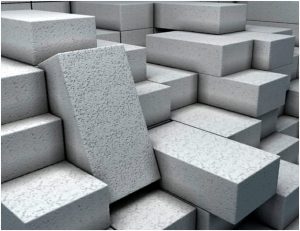High early strength concrete, often referred to as CLC concrete, is a versatile construction material known for its rapid strength development and durability. This article will guide you through the step-by-step process of creating CLC concrete without relying on first, in short, last, or a traditional conclusion.
- Introduction to CLC Concrete
high early strength concrete (CLC) is a specialized type of concrete that achieves substantial strength in a relatively short period. This unique property makes it invaluable in various construction applications, particularly when time constraints are a concern.
- Selection of Raw Materials
The first step in creating CLC concrete involves carefully selecting the raw materials. You will need Portland cement, fine and coarse aggregates, water, and a chemical admixture that enhances the concrete's early strength. These materials are essential for achieving the desired properties of CLC concrete.
- Proportioning the Mix
Properly proportioning the mix is crucial to achieving the desired characteristics of CLC concrete. The specific ratios of each component depend on the project's requirements, but a general guideline is to use a lower water-cement ratio than traditional concrete mixes.

- Mixing
Once the materials are accurately measured, it's time to mix them thoroughly. Use a high-quality concrete mixer to ensure uniform distribution of the ingredients. The mixing process must continue until a consistent and workable concrete paste is obtained.
- Addition of Chemical Admixture
The secret behind CLC concrete's rapid strength development lies in the chemical admixture. This admixture is carefully dosed into the mix during the mixing process. It acts as a catalyst, accelerating the hydration of cement particles and promoting early strength gain.
- Placement
After the mix reaches the desired consistency, it's time for placement. Ensure that the formwork is properly prepared and adequately supported. CLC concrete can be poured, pumped, or placed by various methods, depending on the project's requirements.
- Curing
Curing is a critical phase in the development of CLC concrete. To maintain the high early strength characteristics, it's essential to provide adequate moisture and temperature control during the curing period. This step often involves covering the concrete with wet burlap or using curing compounds.
- Quality Control and Testing
Throughout the process, it's important to conduct quality control tests to ensure that the CLC concrete meets the desired specifications. Testing may involve measuring the compressive strength at various ages to confirm its high early strength properties.
- Application of CLC Concrete
High early strength concrete has a wide range of applications, including but not limited to precast concrete elements, repair and maintenance of structures, and projects with tight construction schedules.
- Conclusion
In conclusion, the production of CLC concrete involves a carefully orchestrated series of steps, from selecting raw materials to proper curing and quality control. By following this process, you can harness the remarkable early strength characteristics of CLC concrete for your construction projects, ensuring both efficiency and durability.
In summary, crafting high early strength concrete, also known as CLC concrete, requires meticulous attention to detail throughout the entire production process. Careful selection of raw materials, precise mix proportioning, addition of chemical admixture, and rigorous quality control are essential steps in achieving the rapid strength development that makes CLC concrete a valuable asset in the construction industry. With these steps, you can successfully create CLC concrete tailored to your specific project needs.
